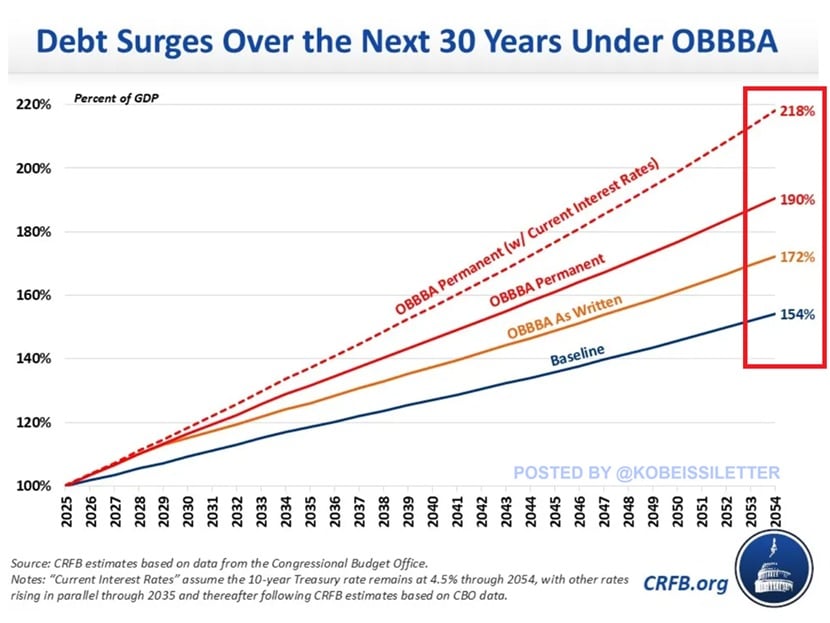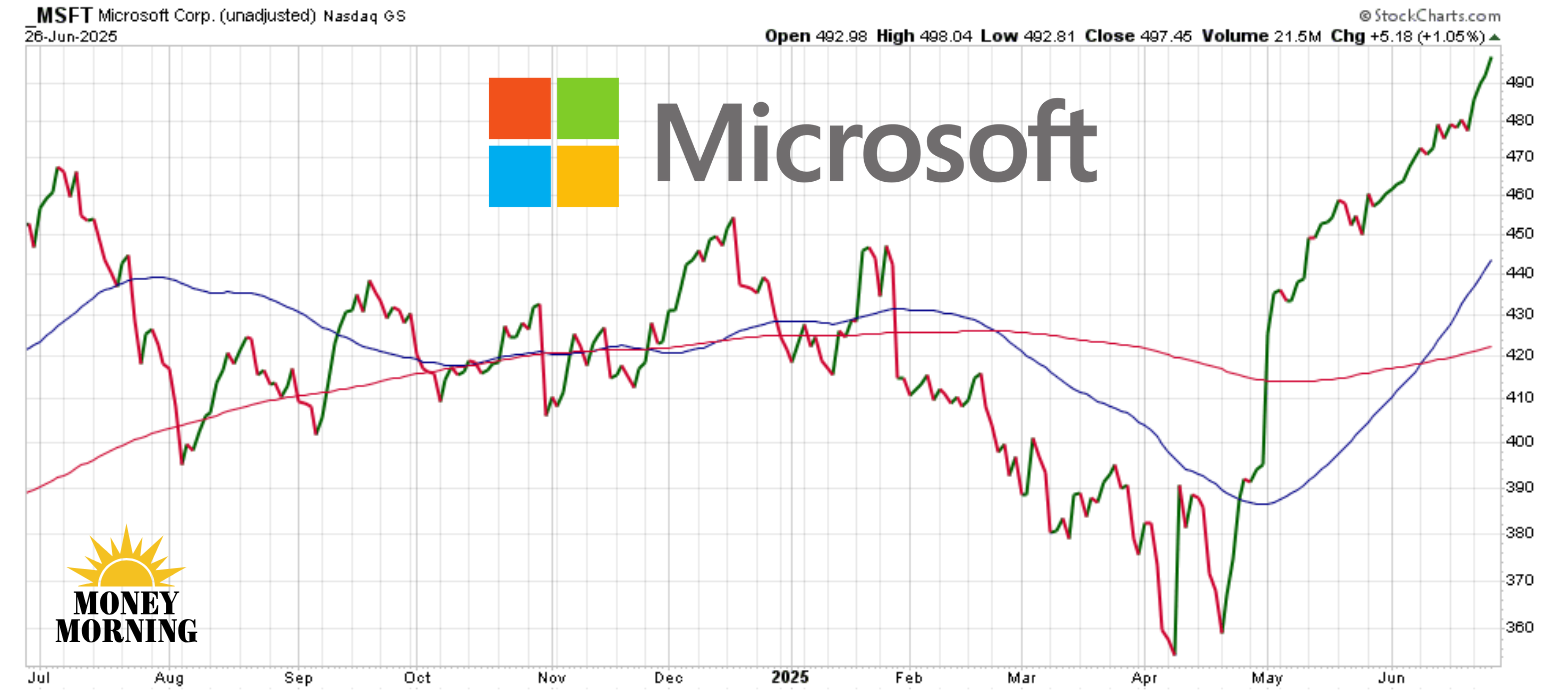President Trump announced yesterday a new trade agreement with China had been reached, calling it a “huge win” to “open up China,” though details remain undisclosed.
Reportedly based on the Geneva talks held last month, which cut U.S. tariffs on Chinese imports from 145% to 30% and China’s retaliatory tariffs to 10%, the deal aims to ease trade tensions.
Trump hinted at a potential India deal next, with many countries still lacking tariff agreements. China, though, as the U.S.’s largest trade partner, was the priority, and the announcement has sparked cautious market optimism.
Market Rally and Tariff Revenue
The news drove the S&P 500 to a record close of 6,141 yesterday, reflecting relief over reduced trade friction. Tariff revenues have exceeded expectations, reaching $88 billion, and the market’s surge contrasts with earlier volatility. Tariffs had triggered a 5% drop in the market in April.
Economic and Fiscal Headwinds
Despite the optimism, economic concerns persist. First-quarter GDP was revised down 0.3 points to -0.5%, the first contraction since Q1 2022, with personal consumption cut by 0.7 points to +0.5%, the weakest since 2020.
The Core PCE Price Index rose to 3.8%, signaling tariff-driven inflation. The Penn Wharton Budget Model warns tariffs could shrink GDP by 6% to 8% long-term. More concerning, Trump’s proposed One Big Beautiful Bill Act spending bill could push the debt-to-GDP ratio to 172%, or 218% by 2054 if made permanent, adding $15 trillion to $55 trillion to the federal debt, according to estimates from the Committee for a Responsible Federal Budget.
 Foreign Investment and Market Resilience
Foreign Investment and Market Resilience
Yet, foreign investors have poured $128 trillion into U.S. financial assets since 1991, with $19 trillion, or 18%, in U.S. stocks, bolstering market strength. Rising debt and tariff impacts, however, threaten this stability.
While the China deal and record S&P 500 reflect short-term optimism, the lack of deal specifics and ongoing talks with India highlight uncertainty. The U.S.’s fiscal path, with potential debt escalation, risks undermining its financial dominance if not addressed, despite strong foreign investment.
The Best Stock to Play Trade Deal and Economic Risk
Investors seeking to profit in this environment should consider Microsoft (MSFT) as a single, resilient investment that balances growth and stability.
The top-tier tech giant, with a $3.7 trillion market cap, is well-positioned to capitalize on the market’s bullish momentum while mitigating risks from trade uncertainties and economic contraction.
MSFT’s diversified revenue streams – cloud computing (Azure), software (Windows, Office), and AI – drive consistent 15% compounded annual growth. Azure’s 33% revenue growth through the first three quarters of fiscal 2025 benefits from AI and cloud demand, and is less impacted by tariff-driven disruptions affecting trade-sensitive sectors.
Microsoft’s 46% operating margin ensures profitability, even as inflation rises, and its 0.7% dividend yield offers a modicum of income stability. The company’s plan for $80 billion in data center investments aligns with global AI infrastructure needs, supporting long-term upside.
Unlike cyclical sectors vulnerable to weak consumer spending, MSFT’s enterprise-focused model thrives on steady corporate demand.
 Its forward P/E of 38, while high, is justified by robust earnings growth, and its $205.3 billion in year-to-date revenue provides a buffer against GDP contraction. Fiscal debt concerns are less immediate for Microsoft, as its $71.6 billion cash reserve and minimal debt exposure insulate it from rising interest rates.
Its forward P/E of 38, while high, is justified by robust earnings growth, and its $205.3 billion in year-to-date revenue provides a buffer against GDP contraction. Fiscal debt concerns are less immediate for Microsoft, as its $71.6 billion cash reserve and minimal debt exposure insulate it from rising interest rates.
Foreign investment in U.S. stocks further bolsters MSFT’s appeal, as tech remains a magnet for global capital.
To manage volatility, investors shouldn’t go all-in, however. Allocating 20% to 30% to cash to buy more stock on any dips if trade talks with India falter or debt fears trigger sell-offs. Microsoft’s growth trajectory and resilience make it a prime choice for profiting in this complex market.
— Rich Duprey
Out of 23,281 Stocks... Only ONE is This Profitable and Undervalued. [sponsor]$3 billion+ in operating income. Market cap under $8 billion. 15% revenue growth. 20% dividend growth. No other American stock but ONE can meet these criteria... here's why Donald Trump publicly backed it on Truth Social. See His Breakdown of the Seven Stocks You Should Own Here.
Source: Money Morning
